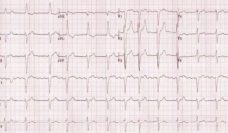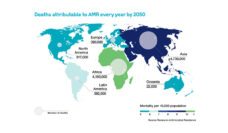Everyone is tempted to borrow antibiotics from a friend when you’re sick or not complete a prescribed course of treatment when you feel better. But the threat of antimicrobial resistance is growing, and these seemingly personal health decisions have far-reaching ramifications: improper use of antibiotics may produce bacteria that no long respond to commonly-used medications.
Antimicrobial resistance is a major threat to health globally. According to a recently published CDC report, nearly three million people in the United States are infected with antibiotic-resistant bacteria each year, resulting in more than 35,000 deaths.
Although bacteria naturally build resistance to some treatments over time, continued overuse and misuse of antibiotics can accelerate the change. In an Annals of Internal Medicine study from July, researchers reviewed 31 studies to examine how common improper, non-prescription antibiotic use is, as well as what influences the habit.
The highest estimate of misuse (48%) came from a nationwide internet survey of American adults. Antibiotics were obtained from many sources, including friends or family, a previously unfinished dose, online, or at a local store. On the other hand, only 3% of parents of young children said they or their children use non-prescription antibiotics.
Patients should only take antibiotics when they are necessary and need to use them correctly.
The most commonly cited reasons for obtaining medicines without a prescription were lack of health insurance, long waiting times at a clinic or doctor’s office, and inadequate transportation. Migrant workers in California said they were afraid of missing a day’s salary and deportation. Studies assessing underlying reasons for non-prescription antibiotic use largely focus on Hispanic or Latino immigrants, many from countries where antibiotics are readily available without a prescription.
The CDC is promoting antibiotic stewardship to help physicians improve their prescribing practices. But more evidence is needed to inform prevention practices. In fact, one communication campaign included in the review actually increased sales of non-prescription antibiotics. Designed for the Latino community in Charleston, South Carolina, the initiative was called “Solo Con Receta”—Spanish for “only with a prescription”—and involved public service announcements and educational pamphlets. These researchers speculate the campaign signaled to individuals that such antibiotics were available, leading to a surge in demand.
One person dies every 15 minutes from antibiotic-resistant bacteria, the CDC noted in its new report. Patients should only take antibiotics when they are necessary and need to use them correctly. How we act today will determine whether antibiotics can still be successfully used in the future.
Photo by Anastasiia Ostapovych on Unsplash














